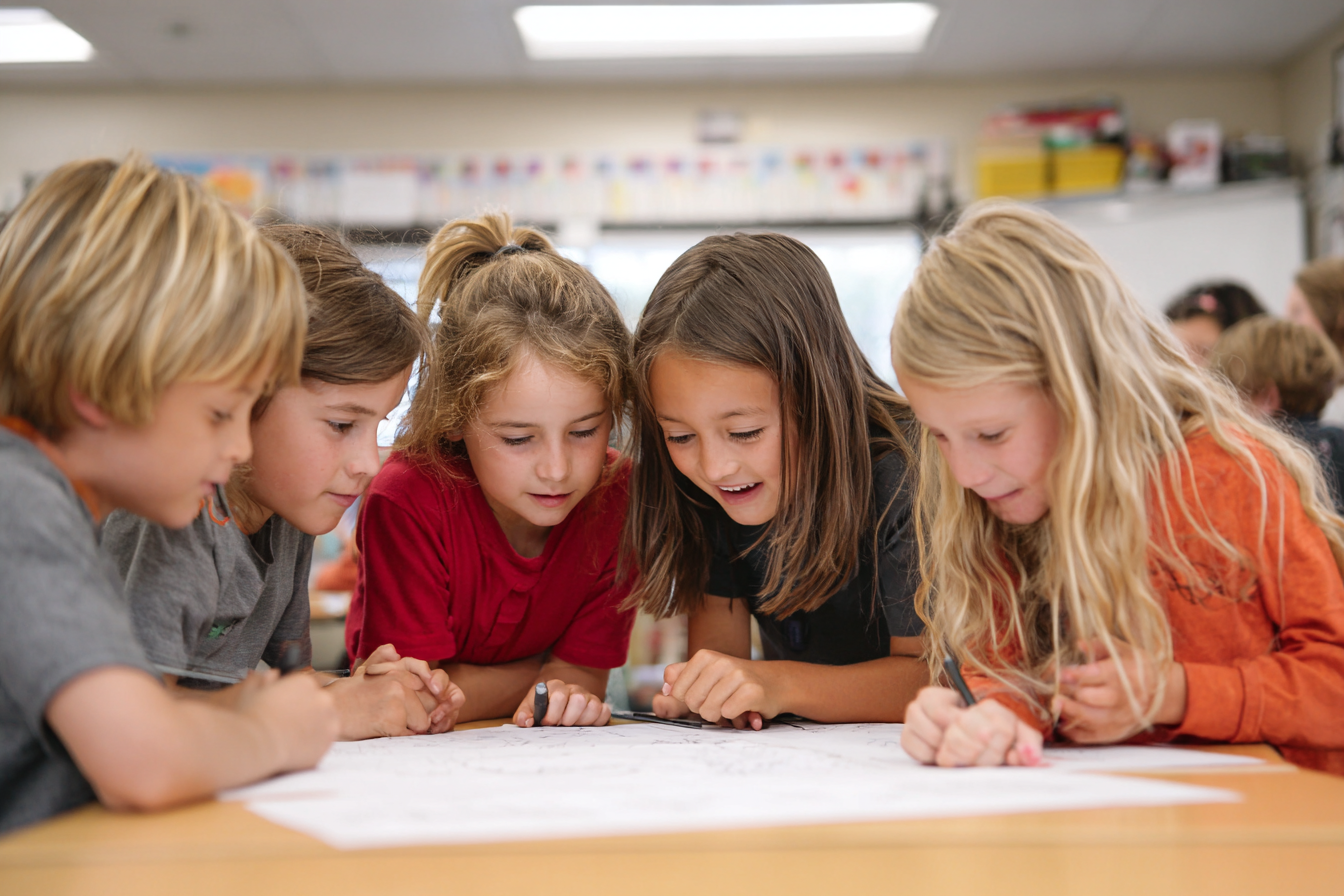Unit Plan 1 (Grade 3 Social Studies): Our Classroom Community
Build a strong Grade 3 classroom community with a civics-focused unit where students learn how rules, fairness, safety, and civic participation help everyone work together, using class meetings, voting, and inquiry to practice responsible citizenship.

Focus: Build a classroom community where students practice respect, cooperation, and responsibility by learning about rules, fairness, safety, and the common good. Students explore how classroom rules and simple local laws help communities work well, and they practice civic participation through class meetings, discussion norms, and simple voting.
Grade Level: 3
Subject Area: Social Studies (Civics • Inquiry)
Total Unit Duration: 5 sessions (one week), 45–60 minutes per session
I. Introduction
Students begin the year by thinking of the classroom as a community where everyone belongs and helps things go well. They explore what it feels like when a community is safe, fair, and kind and why groups need rules and routines. Using stories, scenarios, and class discussions, students connect classroom rules to the ideas of fairness, safety, and the common good, and they learn that communities also have local laws. They then help create or refine classroom agreements and practice civic participation through class meetings, simple voting, and compromise. Throughout, they ask and record questions about how communities work, building inquiry habits for the rest of the year.
Essential Questions
- What makes a classroom community feel safe, fair, and welcoming for everyone?
- Why do we have rules and local laws, and how do they help the common good?
- How can students use civic participation (listening, sharing ideas, voting, compromise) to solve classroom problems?
- What questions do we have about our classroom and community, and how can we explore them?
II. Objectives and Standards
Learning Objectives — Students will be able to:
- Describe a community and give examples of how our classroom is a community.
- Explain how rules and simple local laws promote fairness, safety, and the common good, using at least one comparison (e.g., playground rule vs. bike-helmet rule).
- Help create or revise a set of classroom agreements or a class charter that supports respect and cooperation.
- Participate in a class meeting using basic discussion norms (listening, taking turns, using kind words) and civic participation tools (simple voting, compromise).
- Develop and record questions about our classroom, school, and neighborhood communities using question stems (who, what, where, when, why, how).
- Reflect on their own role as a classroom citizen and set one personal goal for being a respectful, helpful community member.
Standards Alignment — 3rd Grade (C3-based custom)
- 3.C3.Civ.1 — Explain how rules and local laws promote fairness, safety, and the common good.
- Example: Compare a playground rule with a bike-helmet ordinance.
- 3.C3.Civ.3 — Practice civic participation (discussion norms, simple consensus/compromise, classroom voting).
- Example: Hold a class meeting to solve a recess conflict and record the decision.
- 3.C3.Inq.1 — Develop compelling and supporting questions about communities and regions.
- Example: “How does where we live shape what we do?”
Success Criteria — Student Language
- I can explain how our classroom is a community and why that matters.
- I can tell how rules and local laws help keep people safe, fair, and working for the common good.
- I can help make and follow our classroom agreements.
- I can take part in a class meeting by listening, sharing my ideas, and using voting or compromise to help decide what to do.
- I can ask good questions about our classroom and community and write or draw them.
- I can say one way I will be a responsible classroom citizen this year.
